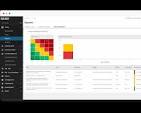Streamline Regulatory Adherence with Document Compliance Management Software
Document Compliance Management Software: Ensuring Regulatory Adherence
In today’s fast-paced business environment, regulatory compliance is a critical aspect that organisations cannot afford to overlook. With the increasing number of laws and regulations governing data privacy, security, and transparency, maintaining compliance has become a complex and demanding task.
Document compliance management software offers a comprehensive solution to help businesses streamline their compliance processes and ensure adherence to regulatory requirements. This software is designed to centralise document management, automate compliance workflows, and provide real-time monitoring of regulatory changes.
The Benefits of Document Compliance Management Software
Centralised Document Repository: By storing all relevant documents in a centralised repository, organisations can easily access and manage their compliance-related documents. This ensures that the latest versions of policies, procedures, and regulations are readily available to authorised personnel.
Automated Workflows: Document compliance management software automates various compliance processes, such as document approvals, reviews, and audits. This not only saves time but also reduces the risk of human error in compliance-related tasks.
Real-time Monitoring: The software provides real-time monitoring of regulatory changes and updates, alerting organisations to any modifications that may impact their compliance status. This proactive approach enables businesses to stay ahead of regulatory requirements.
Choosing the Right Document Compliance Management Software
When selecting document compliance management software for your organisation, consider the following factors:
- Scalability: Ensure that the software can scale with your business as it grows and adapts to changing compliance needs.
- User-Friendly Interface: Look for software that is intuitive and easy to use, ensuring quick adoption by employees at all levels.
- Integration Capabilities: Choose software that seamlessly integrates with existing systems, such as document repositories and workflow tools.
- Audit Trail Functionality: Opt for software that provides a robust audit trail feature for tracking document revisions and user actions.
In Conclusion
Document compliance management software plays a vital role in helping organisations navigate the complex landscape of regulatory compliance. By leveraging this technology, businesses can enhance their efficiency, reduce risks, and demonstrate a commitment to upholding industry standards.
7 Essential Tips for Choosing Document Compliance Management Software
- Ensure the software is GDPR compliant to protect sensitive data.
- Choose a software with version control features to track document changes.
- Look for software that offers customizable permission settings for different users.
- Opt for a solution with automated reminders and notifications for compliance deadlines.
- Select a platform with audit trail capabilities to monitor document access and modifications.
- Consider software that provides encryption options for enhanced security of documents.
- Evaluate software that offers integration with other tools like CRM or ERP systems.
Ensure the software is GDPR compliant to protect sensitive data.
When selecting document compliance management software, it is crucial to ensure that the chosen solution is GDPR compliant to safeguard sensitive data. The General Data Protection Regulation (GDPR) sets strict guidelines for the handling of personal data, and non-compliance can result in hefty fines and reputational damage. By choosing GDPR-compliant software, organisations can mitigate risks associated with data breaches and demonstrate a commitment to protecting individuals’ privacy rights. Prioritising GDPR compliance in document management software selection is essential for maintaining regulatory adherence and fostering trust with stakeholders.
Choose a software with version control features to track document changes.
When selecting document compliance management software, it is advisable to choose a solution that offers robust version control features to track document changes effectively. Version control functionality allows organisations to maintain a clear record of document revisions, ensuring transparency and accountability in compliance processes. By monitoring and documenting changes made to critical documents, businesses can easily trace back to previous versions, track user actions, and demonstrate regulatory adherence with confidence.
Look for software that offers customizable permission settings for different users.
When considering document compliance management software, it is advisable to seek a solution that provides customisable permission settings tailored to different users. This feature allows organisations to control access levels based on roles and responsibilities, ensuring that sensitive information is only accessible to authorised personnel. By implementing customisable permission settings, businesses can enhance data security, maintain regulatory compliance, and promote accountability within their document management processes.
Opt for a solution with automated reminders and notifications for compliance deadlines.
When considering document compliance management software, it is advisable to opt for a solution that offers automated reminders and notifications for compliance deadlines. This feature ensures that key dates and deadlines are never missed, helping organisations stay on track with their regulatory obligations. By receiving timely alerts, businesses can proactively address compliance requirements, mitigate risks, and maintain a high level of adherence to industry regulations.
Select a platform with audit trail capabilities to monitor document access and modifications.
When considering document compliance management software, it is advisable to choose a platform that offers robust audit trail capabilities. This feature enables organisations to monitor document access and modifications effectively, providing a detailed record of who has viewed, edited, or deleted specific documents. By utilising audit trail functionality, businesses can enhance security measures, track compliance-related actions, and demonstrate transparency in regulatory audits. Selecting a software solution with audit trail capabilities ensures comprehensive oversight of document activities, helping organisations maintain regulatory adherence and data integrity.
Consider software that provides encryption options for enhanced security of documents.
When exploring document compliance management software options, it is advisable to consider solutions that offer encryption features to bolster the security of sensitive documents. Encryption adds an extra layer of protection by encoding the content of files, making them unreadable to unauthorised individuals. By prioritising software with encryption capabilities, organisations can safeguard their confidential information and ensure compliance with data protection regulations.
Evaluate software that offers integration with other tools like CRM or ERP systems.
When considering document compliance management software, it is advisable to assess options that provide seamless integration with other essential tools such as Customer Relationship Management (CRM) or Enterprise Resource Planning (ERP) systems. This integration capability ensures a cohesive workflow across various platforms, allowing for efficient data sharing and streamlined processes. By opting for software that can easily connect with existing CRM or ERP systems, organisations can enhance productivity, data accuracy, and overall compliance management effectiveness.





